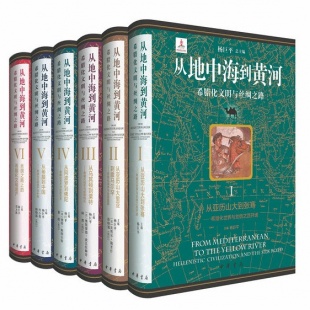Books explore ancient Greek influences on Asia and emerging Silk Road


Some 2,100 to 1,800 years ago in what is today's northwestern Pakistan, the Gandharan civilization produced sculptures of Buddha and other Buddhist figures with the features of Greek gods wrapped in aristocratic robes.
The Gandhara art persisted until the 7th century and had some influence on the Buddhist sculptures seen in China and other East Asian countries.
"The Buddhist art of Gandhara has amazed and puzzled modern observers since its rediscovery in the 19th century, for the artists of Gandhara … took imagery and styles that ultimately originated in ancient Greece, and they made them Buddhist and Asian, and thereby introduced them into the later traditions of Chinese Buddhist art," says Peter Stewart, professor of ancient art and director of the Classical Art Research Centre at the University of Oxford.
"They, and that story (of Gandhara), are emblematic of the fascinating filaments that run through all the periods and places explored in this publication," Stewart says, speaking of the six-volume publication of From Mediterranean to the Yellow River: Hellenistic Civilization and the Silk Road, via video during the book's signing ceremony for the production of an English version at this year's Frankfurt Book Fair in October.

Stewart is coeditor of the fourth volume, From Apollo to Buddha: Hellenistic Art and the Silk Road Arts, which deals with the dissemination and fusion of art, and which according to him, "traces Western classical art traditions from its Greek origins, looking at how it was disseminated and transformed in the Hellenistic world, how it became the heritage of the Roman Empire, and how it eventually became deeply embedded in the cultures of Central Asia and the steppe".
Stewart is among the 40-odd researchers and contributors from across the world, who spent almost 10 years finishing the interdisciplinary studies, which were published by the Zhonghua Book Company as a series of books containing around 1,500 pictures.
"The project was vast, but at its heart was a simple proposition — that two distinct areas (the Hellenistic civilization and the Silk Road) of study were intimately connected and could usefully be researched and explained alongside each other," Stewart says.
"Hellenistic civilization and the Silk Road seem to be two unrelated research fields, but in fact, there is an intrinsic logical relationship between them," says Yang Juping, the book's chief editor and a leading professor of Hellenism at Nankai University.
Yang says that the vast empire established by Alexander the Great, and the Hellenistic world he created that extended from the Mediterranean to Central Asia and the borders of India, laid the foundation for the opening of the Silk Road later on. Meanwhile, the ambitions of the Han Dynasty (206 BC-AD 220) rulers to manage the western regions of their territory and the "exploration" of Central Asia by Zhang Qian ushered in a new era of cultural exchange and mutual learning between the Chinese and Hellenistic civilizations.
"The series is one of the first comprehensive studies of the relationship between the Hellenistic civilization and the Silk Road in China and abroad," Yang says, adding that the perspective the book brings opens up a new field of research, and has allowed the voices of Chinese scholars to be heard on a global stage on matters that were little known or long disputed.
Each volume has a specific theme, but they are interconnected, and examine the general picture, the historical background, the cities, the currencies and the economic overview of the two areas, along with the Hellenistic heritage in China and along the Silk Road.
The publishing group Springer Nature will serve as an amplifier of these voices by bringing the series to a wider international audience with an English version.
"Today, we are not just releasing a book series, but also launching a dialogue that spans continents and centuries," says Niels Peter Thomas, Springer Nature's managing director for books.
Zhang Jihai, deputy editor-in-chief of the Zhonghua Book Company, believes that the series will provide valuable historical references for the Belt and Road Initiative, and be a delight to general readers, providing a glimpse of the overall picture of ancient cultural exchanges between China and the West.
- Award for 10 works of fiction with potential for screen adaptation
- 'Lion Forest Garden in My Eyes' International Communication Project successfully held
- Writing the village as universe
- The Three-Body Problem graphic novel a hit at Frankfurt fair
- iQIYI's new drama sets benchmark for virtual production





































